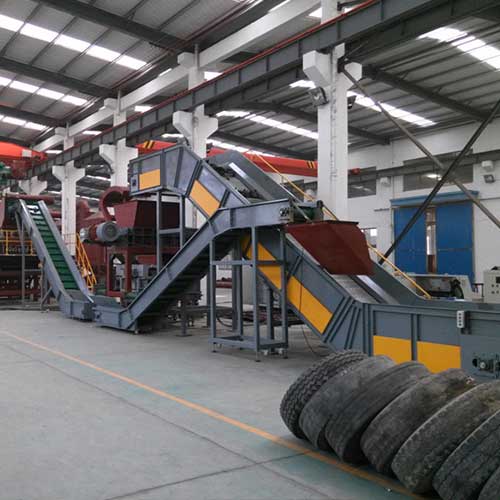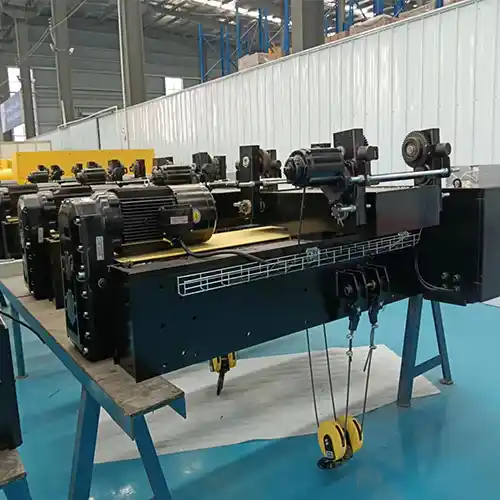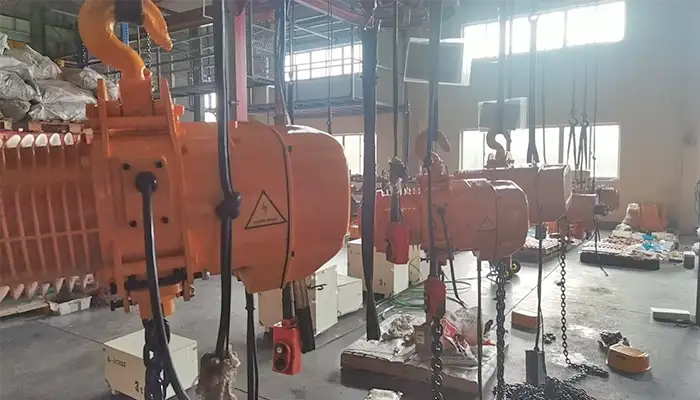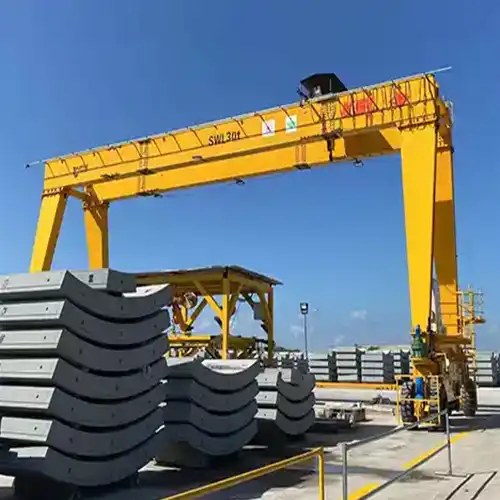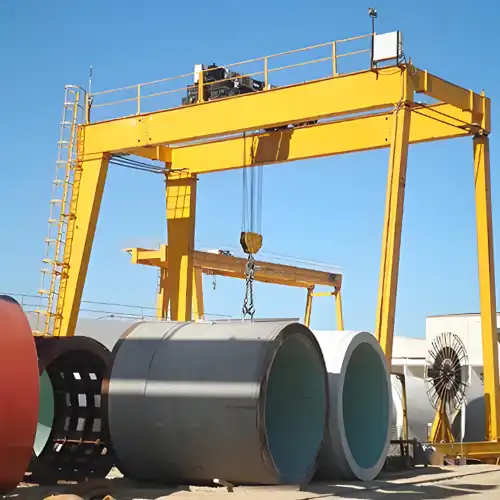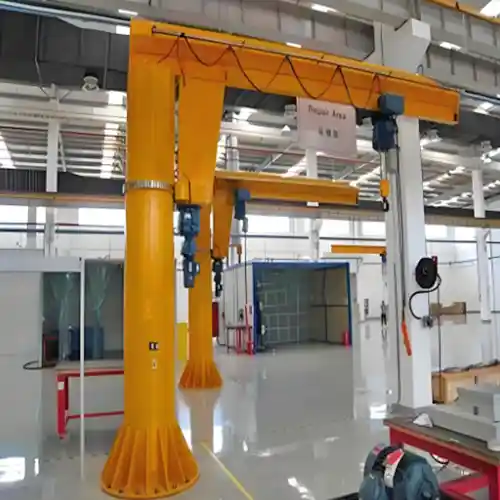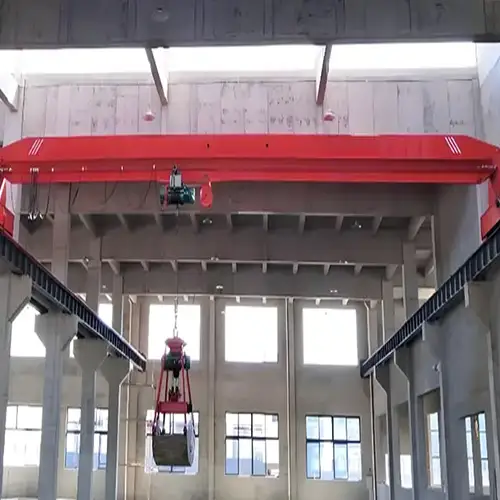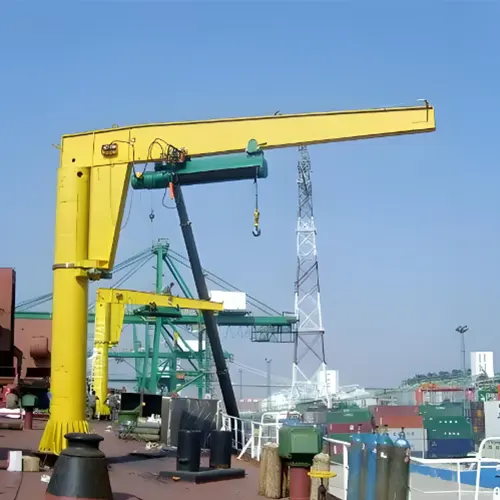Overhead Crane Operation in Wheels Manufacturing 5 Ton, 10 Ton
Overhead Crane Operation in Rubber Tyred Wheels Manufacturing. Custom overhead crane & bridge crane 3 ton , 5 ton, 10 ton, 20 ton, 30 ton, 40 ton, 50 ton for various loads handling.
Category: General Manufacturing
Your Trusted Overhead Crane Manufacturer & Supplier
Overhead Crane Operation in Wheels Manufacturing 5 Ton, 10 Ton
Overhead Crane Operation in Rubber Tyred Wheels Manufacturing
The manufacturing of rubber-tyred wheels involves a complex and intricate process that demands precision, efficiency, and safety at every stage. One crucial element that plays a pivotal role in ensuring the smooth flow of operations is the use of overhead cranes. These powerful machines are the unsung heroes of the manufacturing floor, silently lifting, transporting, and positioning various components with remarkable accuracy.
In the bustling world of rubber-tyred wheel production, the significance of overhead cranes cannot be overstated. These machines serve as the backbone of material handling, facilitating the movement of raw materials, molds, tire components, finished products, and more. The seamless operation of overhead cranes contributes directly to production efficiency, ensuring that every stage of the manufacturing process is executed with precision and timeliness.
Material Handling Excellence
The core function of overhead cranes in rubber-tyred wheel manufacturing lies in their exceptional material handling capabilities. From the initial stages of handling raw materials to the final steps of transporting finished wheels, these cranes are the reliable workhorses that keep the production line moving. Their ability to lift and transport heavy loads with ease makes them indispensable in an industry where the quality of components directly impacts the performance and safety of the final product.
Boosting Production Efficiency
Efficiency is the key to success in any manufacturing operation, and overhead cranes play a pivotal role in achieving just that. By streamlining material handling processes, these cranes minimize downtime, reduce manual labor, and enhance overall productivity. The smooth and controlled movement of materials through the production line ensures that each phase of manufacturing is seamlessly connected, contributing to a more efficient and streamlined operation.
Prioritizing Safety
Safety is paramount in manufacturing, and overhead cranes are designed with this principle in mind. Their advanced features, precision controls, and safety mechanisms prioritize the well-being of workers and the integrity of the materials being handled. In an environment where heavy loads and intricate components are the norm, the reliability and safety features of overhead cranes provide peace of mind to manufacturers and workers alike.
Raw Materials Handling
Efficient handling of raw materials is the cornerstone of a successful rubber-tyred wheel manufacturing process. The careful orchestration of moving raw materials from storage to production areas demands a reliable and agile solution, and this is precisely where overhead cranes come into play. In this section, we explore the significance of raw materials handling and how overhead cranes elevate this critical aspect of the manufacturing journey.
Significance of Handling Raw Materials Efficiently
Raw materials are the building blocks of every rubber-tyred wheel, and their efficient handling is crucial for the seamless flow of production. Overhead cranes, with their diverse designs and configurations, ensure that raw materials, ranging from rubber sheets to steel and aluminum components, are transported with precision and speed. This efficiency not only accelerates the manufacturing process but also contributes to maintaining the quality standards of the final product.
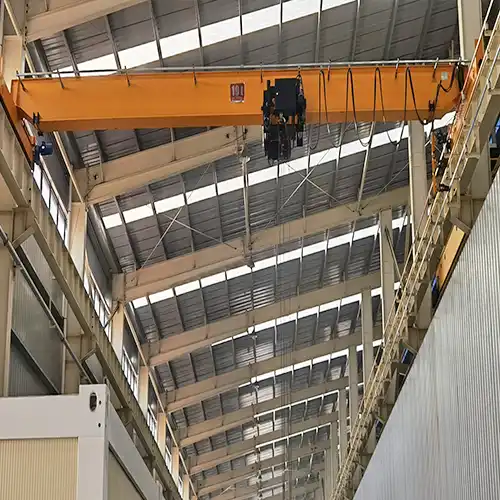
Typical Overhead Crane Designs and Configurations
Single Girder Bridge Cranes:
Suitable for lighter loads and smaller workspaces.
Ideal for the efficient movement of individual raw materials.
Double Girder Bridge Cranes:
Designed for heavier loads and larger spans.
Ensures the swift transport of bulk raw materials.
Gantry Cranes:
Provide flexibility in movement with single or double leg configurations.
Ideal for handling raw materials across different production areas.
Overhead Monorail Systems:
Efficient for transporting loads along a fixed path.
Ensures a continuous flow of raw materials in a production line.
Typical Crane Tonnages and Features
Single Girder Bridge Cranes:
Tonnages vary based on the weight of individual raw materials.
Tailored features for efficient lifting and movement.
Double Girder Bridge Cranes:
Higher tonnages to accommodate the weight of bulk raw materials.
Robust features for heavy-duty material handling.
Gantry Cranes:
Varied tonnages depending on specific application and material weight.
Features tailored to the demands of raw material handling.
Overhead Monorail Systems:
Tonnages suitable for the weight of materials transported.
Configured for continuous and smooth material flow.
Workshops Installed
Raw Material Storage Areas:
Dedicated spaces for organized storage of various raw materials.
Ensures easy accessibility for overhead cranes during material retrieval.
Loading/Unloading Zones:
Strategically positioned areas for the efficient loading and unloading of raw materials.
Minimizes downtime and accelerates material transition.
Dedicated Workstations:
Workstations equipped with overhead crane access for precise material handling.
Enhances the integration of raw materials into the production process.
Typical Loads Handling
Rubber Sheets:
Gentle handling to avoid damage during transportation.
Swift and controlled movement for precise placement.
Steel and Aluminum Components:
Robust handling to accommodate the weight of metal components.
Efficient transport to various production stations.
Various Materials for Production:
Diverse materials handled with flexibility and accuracy.
Continuous and reliable movement to sustain production momentum.
In the intricate dance of rubber-tyred wheel manufacturing, the handling of raw materials sets the rhythm for the entire process. With overhead cranes as the choreographers, this section of the manufacturing journey exemplifies the synergy between efficiency, precision, and reliability. Join us in the next segment as we explore the nuanced handling of molds and dies, where overhead cranes once again take center stage in ensuring the production of high-quality rubber-tyred wheels.
Molds and Dies Handling
In the intricate world of tire manufacturing, precision is paramount, especially when it comes to handling molds and dies. This segment focuses on the critical role played by overhead cranes in ensuring the meticulous handling of molds and dies, key components in shaping and curing rubber-tyred wheels.
Molds and dies are the architects of tire production, defining the final shape and characteristics of each rubber-tyred wheel. The importance of precision in their handling cannot be overstated. Overhead cranes, equipped with specific designs and configurations, step into this role with finesse, ensuring that molds and dies are moved with accuracy and care throughout the tire manufacturing process.
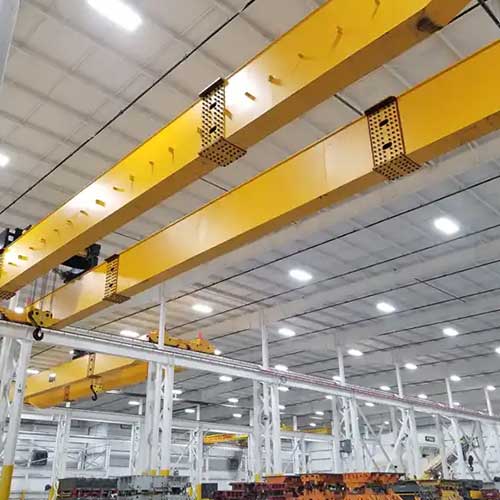
Typical Overhead Crane Designs and Configurations
Double Girder Bridge Cranes:
Ideal for handling heavier molds and dies.
Offers stability and strength in transporting these critical components.
Gantry Cranes:
Provide flexibility in movement with single or double leg configurations.
Efficiently move molds and dies between workstations.
Jib Cranes:
Freestanding or wall-mounted options for localized lifting and positioning.
Perfect for precise handling of molds and dies in specific areas.
Typical Crane Tonnages and Features
Double Girder Bridge Cranes:
Higher tonnages to accommodate the weight of substantial molds and dies.
Enhanced features for secure and stable transportation.
Gantry Cranes:
Varied tonnages based on the size and weight of molds and dies.
Configurations designed to provide both stability and flexibility.
Jib Cranes:
Tonnages suitable for the specific application of mold and die handling.
Compact design for efficient use in confined spaces.
Workshops Installed
Dedicated Areas for Mold and Die Storage:
Specialized zones for organized storage of molds and dies.
Ensures easy accessibility for overhead cranes during retrieval.
Workstations for Preparation:
Equipped with overhead crane access for efficient placement of molds and dies.
Enhances the integration of these components into the tire manufacturing process.
Typical Loads Handling
Movement of Molds and Dies Between Manufacturing Stations:
Precise positioning for shaping and curing processes.
Ensures a smooth transition between different stages of tire production.
In the meticulous dance of tire manufacturing, where precision is a non-negotiable requirement, overhead cranes take center stage in the handling of molds and dies. As we move forward in this exploration of overhead crane operations, the next section will delve into the intricate handling of tire components. Join us in unraveling the complexities involved in the transportation of steel belts, fabric plies, beads, and other materials critical to the rubber-tyred wheel production process.
Tire Components Handling
As the tire manufacturing process progresses, the handling of crucial components becomes a delicate and precise operation. This section delves into the indispensable role of overhead cranes in transporting tire components, such as steel belts, fabric plies, beads, and other materials essential to the creation of high-quality rubber-tyred wheels.
Tire components form the foundation of the final product's structure and performance. The reliable and careful handling of these components is paramount to ensuring the integrity of each rubber-tyred wheel. Overhead cranes, with their diverse designs and configurations, are instrumental in orchestrating the seamless movement of these components throughout the tire manufacturing facility.
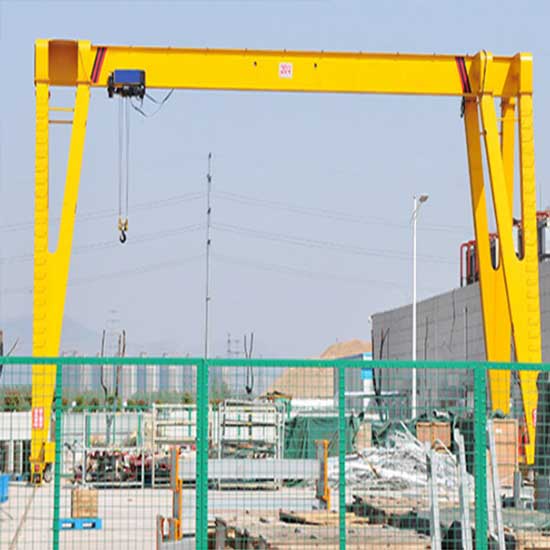
Typical Overhead Crane Designs and Configurations
Single Girder Bridge Cranes:
Ideal for handling lighter to moderately heavy tire components.
Provides efficient and controlled movement within the production line.
Gantry Cranes:
Flexibility in movement with single or double leg configurations.
Suitable for transporting tire components across various workstations.
Overhead Monorail Systems:
Consists of a single rail for transporting loads along a fixed path.
Ideal for continuous and smooth material flow in a production line.
Typical Crane Tonnages and Features
Single Girder Bridge Cranes:
Tonnages tailored to the weight of individual tire components.
Precision controls for accurate placement and movement.
Gantry Cranes:
Varied tonnages based on specific application requirements.
Features designed for stability and flexibility in material handling.
Overhead Monorail Systems:
Tonnages suitable for the weight of tire components being transported.
Configured for efficient and reliable movement along a fixed path.
Workshops Installed
Workstations for Component Assembly:
Equipped with overhead crane access for efficient assembly processes.
Ensures seamless integration of tire components into the production line.
Storage Areas:
Dedicated zones for organized storage of tire components.
Allows easy accessibility for overhead cranes during retrieval.
Integrated Conveyor Systems:
Collaborates with overhead cranes for continuous material flow.
Optimizes the movement of tire components between different production stages.
Typical Loads Handling
Steel Belts:
Careful and controlled handling to prevent damage.
Swift transport for precise placement within the tire structure.
Fabric Plies:
Efficient movement to support the layering process in tire production.
Ensures accurate positioning for optimal structural integrity.
Beads and Other Components:
Delicate handling to maintain the quality of these critical tire elements.
Seamless transport within the production line for timely assembly.
As we continue our journey through the intricacies of overhead crane operations in rubber-tyred wheel manufacturing, the next segment will focus on the handling of finished tires. Join us in exploring how overhead cranes play a vital role in the efficient movement of completed products within the production line, from the curing process to inspection and storage areas.
Finished Tires Handling
The culmination of the tire manufacturing process brings us to the handling of finished tires. Ensuring the seamless transportation of these completed products within the production line is crucial for maintaining the quality and efficiency of the overall operation. In this section, we explore how overhead cranes play a pivotal role in the efficient handling of finished tires from the curing process to inspection and storage areas.
Ensuring Smooth Transportation of Finished Tires
As rubber-tyred wheels emerge from the production line, the focus shifts to the careful handling of finished tires. Overhead cranes, equipped with diverse designs and configurations, are instrumental in ensuring the smooth and precise transportation of these completed products. From the curing process to inspection and storage areas, overhead cranes play a vital role in the final stages of tire manufacturing.
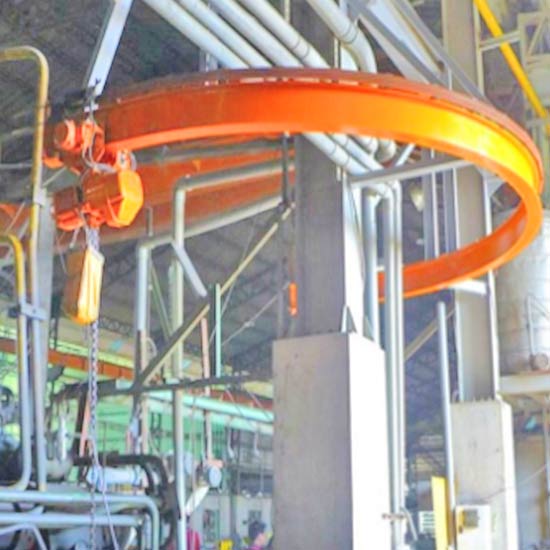
Typical Overhead Crane Designs and Configurations
Single Girder Bridge Cranes:
Efficient for handling finished tires of moderate weight.
Provides precise and controlled movement within the production facility.
Double Girder Bridge Cranes:
Ideal for larger and heavier finished tires.
Offers increased load capacity for seamless transportation.
Gantry Cranes:
Flexibility in movement with single or double leg configurations.
Suitable for transporting finished tires across various production zones.
Overhead Monorail Systems:
Consists of a single rail for transporting finished tires along a fixed path.
Ensures continuous and reliable material flow in the final stages of production.
Typical Crane Tonnages and Features
Single Girder Bridge Cranes:
Tonnages based on the weight of individual finished tires.
Tailored features for precise positioning and controlled movement.
Double Girder Bridge Cranes:
Higher tonnages to accommodate the weight of larger and heavier finished tires.
Robust features for efficient and stable transportation.
Gantry Cranes:
Varied tonnages depending on the size and weight of finished tires.
Configurations designed for stability and flexibility in material handling.
Overhead Monorail Systems:
Tonnages suitable for transporting finished tires along the fixed path.
Configured for continuous and seamless material flow.
Workshops Installed
Inspection Areas:
Dedicated zones equipped for the detailed examination of finished tires.
Ensures the quality control process is executed with precision.
Storage Zones:
Organized spaces for the systematic storage of finished tires.
Facilitates efficient inventory management and product accessibility.
Loading/Unloading Zones:
Strategically positioned areas for the loading and unloading of finished tires.
Minimizes downtime and accelerates the transition to storage or distribution.
Typical Loads Handling
Efficient Transport of Finished Tires:
Swift and controlled movement within the production facility.
Ensures timely delivery to inspection areas and storage zones.
Precise Positioning for Inspection:
Accurate placement for detailed quality control assessments.
Supports the identification of any potential issues or defects.
In the final stages of rubber-tyred wheel manufacturing, overhead cranes take on the responsibility of ensuring the seamless handling of finished tires. Join us in the next section as we explore the specific handling of wheel blanks, examining how overhead cranes contribute to the movement and positioning of these essential components in wheel manufacturing facilities.
Wheel Blanks Handling
In the intricate process of wheel manufacturing, the handling of wheel blanks takes center stage. Wheel blanks, made of materials such as steel or aluminum, form the foundation for the creation of robust and reliable wheels. This section explores the crucial role played by overhead cranes in efficiently handling wheel blanks, from storage areas to machining and finishing stations.
Importance of Handling Wheel Blanks for Wheel Manufacturing
Wheel blanks are the raw canvases from which durable and high-performance wheels are crafted. The handling of these blanks is a critical step in the wheel manufacturing journey, demanding precision and efficiency. Overhead cranes, with their diverse designs and configurations, are instrumental in ensuring the seamless movement and positioning of wheel blanks between various production stages.

Typical Overhead Crane Designs and Configurations
Single Girder Bridge Cranes:
Ideal for handling lighter to moderately heavy wheel blanks.
Efficient and controlled movement within wheel manufacturing facilities.
Double Girder Bridge Cranes:
Designed for larger and heavier wheel blanks.
Provides increased load capacity for seamless transportation.
Gantry Cranes:
Flexibility in movement with single or double leg configurations.
Suitable for transporting wheel blanks across machining and finishing stations.
Typical Crane Tonnages and Features
Single Girder Bridge Cranes:
Tonnages based on the weight of individual steel or aluminum wheel blanks.
Tailored features for precise positioning and controlled movement.
Double Girder Bridge Cranes:
Higher tonnages to accommodate the weight of larger wheel blanks.
Robust features for efficient and stable transportation.
Gantry Cranes:
Varied tonnages depending on the size and weight of wheel blanks.
Configurations designed for stability and flexibility in material handling.
Workshops Installed
Wheel Blank Storage Areas:
Dedicated zones for organized storage of steel or aluminum wheel blanks.
Ensures easy accessibility for overhead cranes during retrieval.
Machining and Finishing Stations:
Equipped with overhead crane access for efficient movement of wheel blanks.
Enhances the integration of wheel blanks into the manufacturing process.
Typical Loads Handling
Transporting Wheel Blanks Between Production Stages:
Swift and controlled movement within wheel manufacturing facilities.
Ensures timely delivery to machining and finishing stations.
In the intricate dance of wheel manufacturing, overhead cranes take on the responsibility of handling the foundational elements—wheel blanks. Join us in the next section as we explore how overhead cranes are instrumental in the efficient transport of tools, equipment, and machinery required for different stages of tire and wheel production.
Tools and Equipment Handling
Efficient transport of tools, equipment, and machinery is a critical aspect of tire and wheel production. In this section, we delve into the pivotal role played by overhead cranes in ensuring the seamless movement of various tools and equipment required for different stages of the manufacturing process.
Efficient Transport of Tools, Equipment, and Machinery for Production
The tire and wheel production process relies on a diverse range of tools, equipment, and machinery. The efficient transport of these elements is essential for maintaining a smooth and continuous manufacturing flow. Overhead cranes, with their adaptable designs and configurations, serve as the backbone in orchestrating the movement of tools and equipment across various workstations.
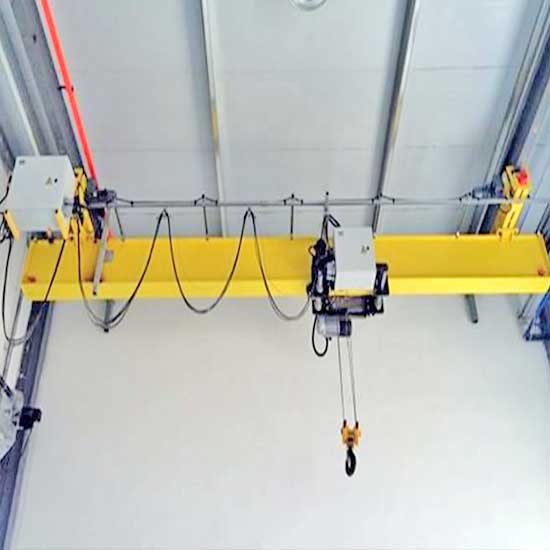
Typical Overhead Crane Designs and Configurations
Single Girder Bridge Cranes:
Ideal for handling lighter to moderately heavy tools and equipment.
Efficient movement within specific production areas.
Gantry Cranes:
Flexibility in movement with single or double leg configurations.
Suitable for transporting tools and equipment across different workstations.
Jib Cranes:
Freestanding or wall-mounted options for localized lifting and positioning.
Perfect for precise handling of tools and equipment in specific areas.
Typical Crane Tonnages and Features
Single Girder Bridge Cranes:
Tonnages based on the weight of individual tools and equipment.
Tailored features for precise positioning and controlled movement.
Gantry Cranes:
Varied tonnages depending on specific application requirements.
Configurations designed for stability and flexibility in material handling.
Jib Cranes:
Tonnages suitable for the specific application of tool and equipment handling.
Compact design for efficient use in confined spaces.
Workshops Installed
Dedicated Storage Areas:
Organized zones for the systematic storage of tools and equipment.
Ensures easy accessibility for overhead cranes during retrieval.
Loading/Unloading Zones:
Strategically positioned areas for the loading and unloading of tools and equipment.
Minimizes downtime and accelerates the transition between workstations.
Workstations:
Equipped with overhead crane access for precise placement of tools and equipment.
Enhances the integration of these elements into the tire and wheel production process.
Typical Loads Handling
Various Tools:
Delicate handling to prevent damage to precision tools.
Swift and controlled transport to support different production stages.
Machinery:
Efficient movement of heavy machinery to designated workstations.
Ensures the timely availability of equipment for specific tasks.
Equipment Used in Production:
Diverse equipment handled with flexibility and accuracy.
Continuous and reliable movement to sustain production momentum.
As we navigate through the intricate operations of overhead cranes in tire and wheel manufacturing, the next section will explore their role in the transportation of finished wheels. Join us in uncovering how overhead cranes contribute to the movement and positioning of finished wheels before they are assembled onto vehicles.
Finished Wheels Handling
The final chapter in the tire and wheel manufacturing journey involves the handling of finished wheels. This section explores the crucial role played by overhead cranes in transporting finished wheels before they are assembled onto vehicles. From storage zones to inspection and quality control areas, overhead cranes ensure the precise positioning and efficient movement of these completed products within the manufacturing facility.
Crucial Role in Transporting Finished Wheels
As finished wheels emerge from the production line, their journey is far from complete. The reliable and precise handling of these completed products is essential in ensuring their integrity and quality before they are assembled onto vehicles. Overhead cranes, equipped with diverse designs and configurations, play a pivotal role in orchestrating the movement of finished wheels within the facility.
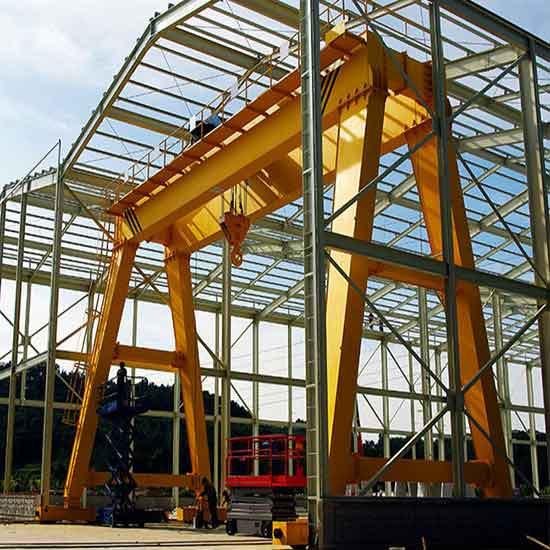
Typical Overhead Crane Designs and Configurations
Single Girder Bridge Cranes:
Efficient for handling finished wheels of moderate weight.
Provides precise and controlled movement within the production facility.
Double Girder Bridge Cranes:
Ideal for larger and heavier finished wheels.
Offers increased load capacity for seamless transportation.
Gantry Cranes:
Flexibility in movement with single or double leg configurations.
Suitable for transporting finished wheels across various production zones.
Overhead Monorail Systems:
Consists of a single rail for transporting finished wheels along a fixed path.
Ensures continuous and reliable material flow in the final stages of production.
Typical Crane Tonnages and Features
Single Girder Bridge Cranes:
Tonnages based on the weight of individual finished wheels.
Tailored features for precise positioning and controlled movement.
Double Girder Bridge Cranes:
Higher tonnages to accommodate the weight of larger finished wheels.
Robust features for efficient and stable transportation.
Gantry Cranes:
Varied tonnages depending on the size and weight of finished wheels.
Configurations designed for stability and flexibility in material handling.
Overhead Monorail Systems:
Tonnages suitable for transporting finished wheels along the fixed path.
Configured for continuous and seamless material flow.
Workshops Installed
Storage Zones:
Organized spaces for the systematic storage of finished wheels.
Facilitates efficient inventory management and product accessibility.
Loading/Unloading Zones:
Strategically positioned areas for the loading and unloading of finished wheels.
Minimizes downtime and accelerates the transition to inspection and quality control areas.
Inspection and Quality Control Areas:
Dedicated zones equipped for detailed examination and quality control assessments.
Ensures that finished wheels meet the specified standards before assembly.
Typical Loads Handling
Precise Positioning of Finished Wheels:
Accurate placement for inspection and quality control.
Supports the identification of any potential issues or defects.
Efficient Transport Within the Facility:
Swift and controlled movement of finished wheels.
Ensures timely delivery to inspection and quality control areas.
As we conclude our exploration of overhead crane operations in rubber-tyred wheel manufacturing, the comprehensive journey has revealed the indispensable role played by these machines in ensuring efficiency, precision, and safety across various production stages. From handling raw materials to transporting finished wheels, overhead cranes stand as silent choreographers in the intricate dance of tire and wheel production.
Tire Testing Equipment Handling
In the realm of tire manufacturing, the quality control and performance evaluation of the final products are paramount. This section delves into the crucial role played by overhead cranes in handling tire testing equipment. From dedicated testing areas to efficient loading and unloading zones, overhead cranes contribute to the seamless transport of tires for quality control and performance evaluation.
The Role of Overhead Cranes in Transporting Tires for Quality Control and Testing
Quality control is a cornerstone in tire manufacturing, ensuring that each product meets stringent standards for performance and safety. Overhead cranes, with their versatile designs and configurations, are integral in facilitating the movement of tires within dedicated testing areas. From loading and unloading zones to precise positioning for testing equipment, overhead cranes contribute to the efficiency and accuracy of the quality control process.
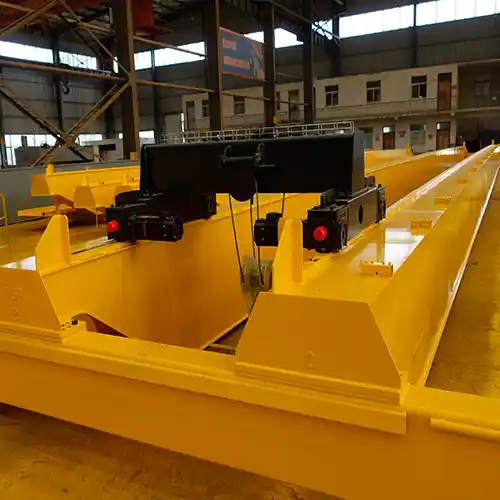
Typical Overhead Crane Designs and Configurations
Single Girder Bridge Cranes:
Efficient for handling testing equipment and tires within designated areas.
Provides controlled movement for precise positioning during quality control processes.
Gantry Cranes:
Flexibility in movement with single or double leg configurations.
Suitable for transporting tires between testing areas and loading/unloading zones.
Typical Crane Tonnages and Features
Single Girder Bridge Cranes:
Tonnages tailored to the weight of testing equipment and tires.
Features designed for precise positioning and controlled movement.
Gantry Cranes:
Varied tonnages based on specific application requirements.
Configurations designed for stability and flexibility in material handling.
Workshops Installed
Dedicated Testing Areas:
Equipped with overhead crane access for efficient movement of tires during testing.
Ensures that tires are transported with precision for accurate evaluation.
Loading/Unloading Zones:
Strategically positioned areas for the loading and unloading of tires.
Minimizes downtime and accelerates the transition to testing areas.
Typical Loads Handling
Efficient Transport of Tires for Quality Control:
Swift and controlled movement of tires within testing areas.
Facilitates timely evaluation and inspection for quality assurance.
Performance Evaluation:
Precise positioning of tires for various testing processes.
Supports the thorough assessment of performance and safety characteristics.
In the intricate landscape of tire manufacturing, overhead cranes emerge as silent facilitators in the crucial phase of quality control and performance testing. As we conclude this exploration, we acknowledge the multifaceted contributions of overhead cranes across the entire spectrum of rubber-tyred wheel production. From handling raw materials to transporting finished wheels and facilitating quality control, these machines play a pivotal role in ensuring efficiency, precision, and safety in tire manufacturing processes.
Recycled Tire Materials Handling
In the pursuit of sustainability, the handling of recycled rubber materials takes precedence in recycling centers. This section explores the integral role played by overhead cranes in efficiently transporting recycled tire materials. From recycling areas to loading and unloading zones, overhead cranes contribute to the sustainable management of recycled materials for various applications.
Handling Recycled Rubber Materials for Sustainability
Recycling centers play a vital role in repurposing discarded tires, contributing to environmental sustainability. Overhead cranes, with their adaptable designs and configurations, are instrumental in the responsible handling of recycled rubber materials. This involves the efficient movement of materials within recycling areas, loading and unloading zones, and storage facilities.
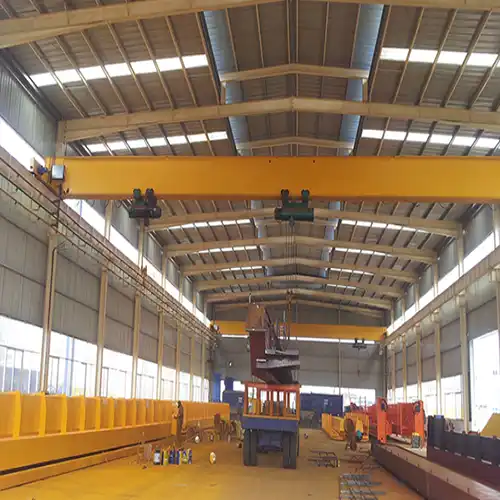
Typical Overhead Crane Designs and Configurations
Single Girder Bridge Cranes:
Efficient for handling recycled rubber materials within designated areas.
Provides controlled movement for precise positioning during recycling processes.
Gantry Cranes:
Flexibility in movement with single or double leg configurations.
Suitable for transporting recycled tire materials between recycling areas and loading/unloading zones.
Typical Crane Tonnages and Features
Single Girder Bridge Cranes:
Tonnages tailored to the weight of recycled rubber materials.
Features designed for precise positioning and controlled movement.
Gantry Cranes:
Varied tonnages based on specific application requirements.
Configurations designed for stability and flexibility in material handling.
Workshops Installed
Recycling Areas with Storage for Recycled Materials:
Equipped with overhead crane access for efficient movement of recycled tire materials.
Ensures that recycled materials are transported with precision for various applications.
Loading/Unloading Zones:
Strategically positioned areas for the loading and unloading of recycled tire materials.
Minimizes downtime and accelerates the transition to recycling areas and storage.
Typical Loads Handling
Efficient Transport of Recycled Tire Materials:
Swift and controlled movement of recycled materials within recycling centers.
Facilitates their repurposing for various applications, contributing to environmental sustainability.
In the ever-evolving landscape of tire manufacturing and recycling, overhead cranes demonstrate their adaptability by contributing to sustainable practices. As we conclude this comprehensive journey through overhead crane operations in rubber-tyred wheel manufacturing, we recognize the diverse roles these machines play in fostering efficiency, precision, and environmental responsibility across various stages of production.
Retreaded Tires Handling
The retreading process is a critical phase in tire manufacturing, extending the life of tires through renewal. This section explores the efficient movement of tires through the retreading process, highlighting the indispensable role played by overhead cranes. From retreading stations with machinery to loading and unloading zones, overhead cranes contribute to the seamless transport of tires at different stages of the retreading process.
Efficient Movement of Tires Through the Retreading Process
Retreading is a sustainable practice that involves renewing worn-out tires, extending their lifespan and reducing environmental impact. Overhead cranes, equipped with adaptable designs and configurations, are instrumental in ensuring the efficient movement of tires within retreading stations. This includes transporting tires through various retreading process stages, optimizing the renewal of these essential components.

Typical Overhead Crane Designs and Configurations
Single Girder Bridge Cranes:
Efficient for handling retreaded tires within designated retreading stations.
Provides controlled movement for precise positioning during the retreading process.
Gantry Cranes:
Flexibility in movement with single or double leg configurations.
Suitable for transporting retreaded tires between retreading stations and loading/unloading zones.
Typical Crane Tonnages and Features
Single Girder Bridge Cranes:
Tonnages tailored to the weight of retreaded tires.
Features designed for precise positioning and controlled movement.
Gantry Cranes:
Varied tonnages based on specific application requirements.
Configurations designed for stability and flexibility in material handling.
Workshops Installed
Retreading Stations Equipped with Machinery:
Overhead crane access for efficient movement of retreaded tires through the retreading process.
Enhances the integration of tires at different stages of renewal.
Loading/Unloading Zones:
Strategically positioned areas for the loading and unloading of retreaded tires.
Minimizes downtime and accelerates the transition between retreading stations.
Typical Loads Handling
Transporting Tires at Different Retreading Process Stages:
Swift and controlled movement of retreaded tires within retreading stations.
Facilitates their transition between various stages, ensuring a seamless and efficient renewal process.
In the intricate tapestry of tire manufacturing, the retreading process stands as a testament to sustainability and resourcefulness. Overhead cranes, acting as silent choreographers, ensure the smooth transport of tires at different retreading process stages. As we conclude this exploration of overhead crane operations in rubber-tyred wheel manufacturing, we recognize the diverse roles these machines play in fostering efficiency, precision, and sustainability across various stages of production and renewal.
Wrap it Up,
In the intricate dance of rubber-tyred wheel manufacturing, overhead cranes emerge as silent yet indispensable choreographers, orchestrating the seamless movement of materials and components across diverse stages. This comprehensive exploration has highlighted the multifaceted roles played by overhead cranes, emphasizing their efficiency, safety, and precision in contributing to the success of the manufacturing process.
Overhead cranes play a pivotal role in handling various elements across the rubber-tyred wheel manufacturing spectrum:
- Raw Materials Handling:Efficiently transport raw materials like rubber, steel, and aluminum to different manufacturing areas.
- Molds and Dies Handling:Precisely position and transport molds and dies essential for tire shaping and curing processes.
- Tire Components Handling:Handle components such as steel belts, fabric plies, beads, ensuring their seamless integration into the tire manufacturing process.
- Finished Tires Handling:Ensure the smooth transportation of finished tires from the curing process to inspection and storage areas.
- Wheel Blanks Handling:Facilitate the movement of wheel blanks, foundational elements for wheel manufacturing, through various production stages.
- Tools and Equipment Handling:Efficiently transport tools, equipment, and machinery required for different stages of tire and wheel production.
- Finished Wheels Handling:Play a crucial role in moving finished wheels to storage or distribution areas before assembly onto vehicles.
- Tire Testing Equipment Handling:Contribute to the quality control process by transporting tires for testing and performance evaluation.
- Recycled Tire Materials Handling:Support sustainability by handling recycled rubber materials in recycling centers.
- Retreaded Tires Handling:Facilitate the movement of tires through the retreading process, extending their lifespan.
Emphasizing Efficiency, Safety, and Precision
The efficiency, safety, and precision achieved through proper overhead crane operation are paramount to the success of rubber-tyred wheel manufacturing. Overhead cranes offer:
- Efficient Material Handling:Swift and controlled movement of materials, optimizing production timelines.
- Enhanced Safety Protocols:Adherence to stringent safety measures, minimizing the risk of accidents and ensuring a secure working environment.
- Precision in Positioning:Precise positioning of materials and components, contributing to the quality and integrity of the final products.
In conclusion, overhead cranes stand as silent champions, navigating the complex choreography of tire and wheel production with grace and efficacy. Their role goes beyond mere transportation; they are the unsung heroes that contribute to the efficiency, safety, and precision that define successful rubber-tyred wheel manufacturing. As industries evolve, overhead cranes continue to adapt, ensuring a harmonious and seamless manufacturing process for the wheels that keep our vehicles in motion.
Main Projects
Related Products

Latest project
32/5 Ton Overhead Crane Sale in India: Case Study
Free consultation to Confirm Parameters & Specifications and Get
Latest Crane Price & Crane Rate.
- Types of overhead cranes : _______?
- Optional: Overhead travelling crane, goliath gantry crane,Slewing jib crane, Single girder or double girder crane,small portable crane or kbk crane, etc.
- Capacity of overhead crane: _______?
- Optional: 0.25ton, 0.5 ton, 1 ton, 2 ton, 3ton, 5 ton, 10 ton,15ton, 20ton, 25 ton, 30ton,35ton, up to 550ton, etc.
- Crane span & lifting height : _______?
- Crane travelling length : _____?
- Control of overhead crane:_______?
- Optional: pendant/ remote/cabin control
- Voltage supply of overhead crane:_____?
- Eg,: 380V50/60HZ,3Phase or others,etc.
- Application/usage of crane:_______?
- Eg,: Steel mill, ,injection mold, cement,stone, concrete,granite, general manufacturing, etc.
Just leave a message via the contact form and our hoist and crane engineer will contact you with in 24working hours.
Get In Touch
